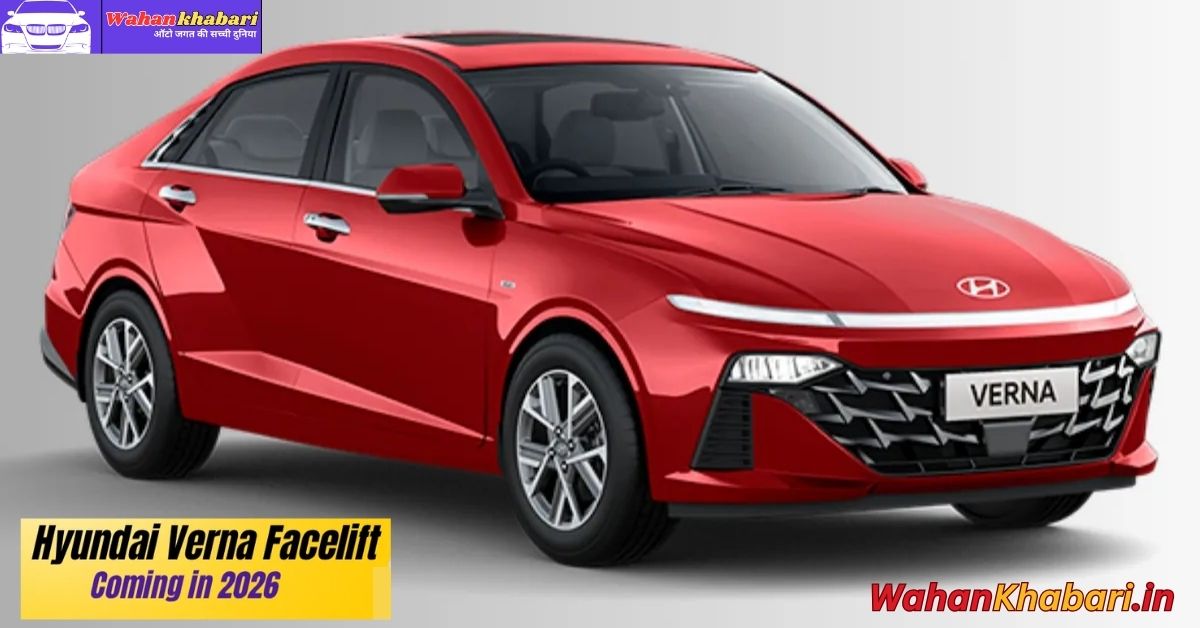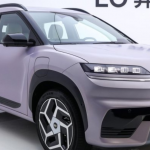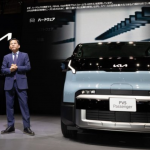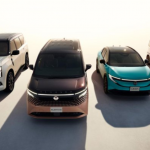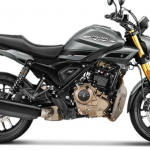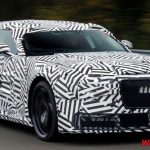The Hyundai Verna has long been one of the most popular choices in the compact sedan segment, offering a blend of style, comfort, and feature-rich technology. While it continues to attract buyers with its sharp design and premium features, Hyundai is gearing up to launch a facelifted version of the Verna to keep it competitive in an ever-evolving market. Recent spy shots of the upcoming Verna facelift have sparked excitement, giving us an early glimpse into what’s in store. Here’s everything we know so far about the Hyundai Verna facelift, based on the latest test mules and insider information.
Design Tweaks and Exterior Changes
The spy shots of the Hyundai Verna facelift indicate several subtle yet significant updates to its exterior. While the overall silhouette of the car remains familiar, it’s clear that Hyundai has worked on refining the design to give the Verna a more modern and premium look.
One of the most notable changes is the front fascia. The new Verna is expected to adopt a larger, more aggressive grille that flows into sleek, redesigned headlights. These headlights are likely to feature LED elements for improved visibility and a more futuristic look. The grille itself will likely adopt Hyundai’s latest family design language, similar to what we’ve seen on newer models like the Hyundai Tucson.
Hyundai seems to have kept the overall dimensions of the Verna relatively unchanged. However, the facelift will likely result in improved aerodynamics, contributing to better fuel efficiency and a quieter ride.
Interior and Technology Enhancements
The cabin of the Hyundai Verna has always been one of its key selling points, offering a premium feel and a host of features. With the upcoming facelift, Hyundai is expected to introduce several updates that will further elevate the in-cabin experience.
Spy shots of the interior show a redesigned dashboard layout, with a larger touchscreen infotainment system expected to be the centerpiece. This screen will likely support the latest version of Hyundai’s BlueLink connected car technology, along with Apple CarPlay and Android Auto compatibility. Additionally, there may be improvements to the instrument cluster, with a digital display providing more information and a sleeker, more modern appearance.
Expect the Hyundai Verna facelift to come with an upgraded sound system as well, with higher-end variants possibly featuring a premium sound system from a renowned brand like Bose. Materials inside the cabin are likely to be upgraded, with better plastics and soft-touch finishes being incorporated into the dashboard and door panels. Hyundai may also offer more advanced upholstery options, including leatherette seats in the mid and top trims.
Performance and Powertrain Updates
Under the hood, the Hyundai Verna facelift is likely to retain most of the powertrain options from the current model but with some tuning tweaks to enhance performance and efficiency. In India, the Verna is offered with both petrol and diesel engine options, and it is expected that the facelift will continue to provide these choices.
The petrol engines could see slight upgrades in terms of power output, with a focus on making them more fuel-efficient. The 1.5-liter naturally aspirated petrol engine, which currently produces 115 bhp, could receive mild-hybrid technology to improve fuel efficiency and reduce emissions, making it more appealing to eco-conscious buyers.
The diesel variant, powered by a 1.5-liter turbocharged engine, may also see minor improvements in refinement and fuel economy. Given the growing demand for greener alternatives, Hyundai may introduce a petrol hybrid variant as well, which could offer a good balance between performance and efficiency.
Hyundai could also offer a choice between manual and automatic transmissions, with the automatic variants likely to be equipped with Hyundai’s 6-speed torque converter or CVT units, depending on the engine choice.
Safety Features and Driver Assistance Systems
Hyundai is known for packing its cars with safety features, and the Verna facelift will likely follow suit. Expect features like multiple airbags, ABS with EBD, reverse parking sensors, and a rearview camera to be standard across most variants. Higher trims may offer advanced driver assistance systems (ADAS) such as lane-keep assist, forward collision warning, automatic emergency braking, and adaptive cruise control.
The inclusion of these safety features will help the Verna compete with rivals that offer similar technologies, ensuring that it remains a strong contender in the segment. Moreover, Hyundai’s reputation for building reliable, safe cars will only be reinforced with these enhancements.
Expected Launch and Pricing
The Hyundai Verna facelift is expected to be launched sometime in 2025, though exact dates may vary depending on the market. Prices for the updated Verna are likely to see a slight increase, given the new features and design updates. Expect the base variant to start at around ₹9 lakh (ex-showroom), with top-end variants touching ₹15 lakh or more.
Conclusion
The Hyundai Verna facelift is shaping up to be an exciting update to an already popular car. With refreshed exterior styling, an upgraded interior, improved technology, and more efficient powertrains, the new Verna is poised to take the fight to its competitors in the compact sedan segment. Whether you’re looking for a stylish daily commuter, a feature-rich family sedan, or a car that strikes the perfect balance between performance and comfort, the Hyundai Verna facelift is likely to meet all your needs. Stay tuned for more updates as the launch date draws closer!

Hello, my name is Muskan Kumari and I am an experienced Digital Marketer. I have been blogging for the last 3 years and I have special interest in SEO. Here I give you easy bikes and writes easy-to-understand reviews and news about the latest bikes, helping readers choose the best options.. My aim is to always provide you with accurate, new and useful information.
